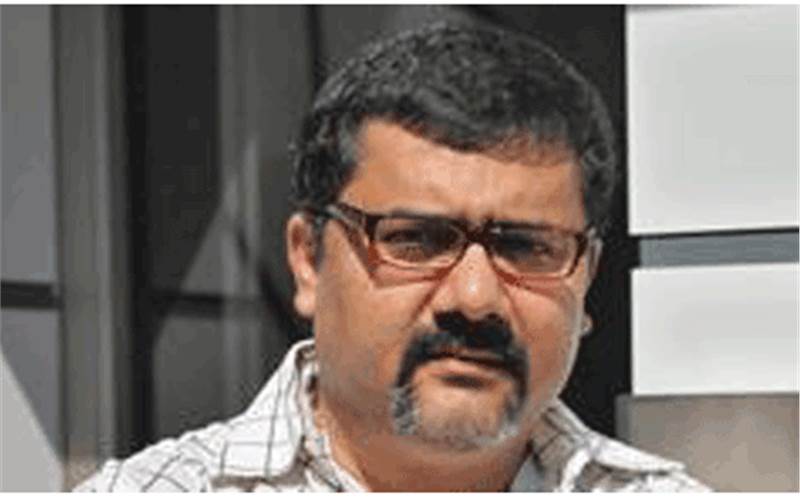AIM president Mitrajit Bhattacharya: "There is money to be made from printed products"
The Association of Indian Magazine (AIM) has elected Mitrajit Bhattacharya, president and publisher of the Chitralekha Group, as the president for 2014-15. Bhattacharya, who was the vice president of the association, takes over from Tarun Rai, CEO at Worldwide Media (WWM). In conversation with Tanvi Parekh, a day after AIM hosted a successful Indian Magazine Congress (IMC) in New Delhi.
01 Mar 2014 | By Tanvi Parekh
Tanvi Parekh (TP): Last year, Network18 Publishing sold the iconic brand Yellow Pages, besides shutting down a better part of the 21 titles published by the company. Most of the other majors have not added titles. Given the set of problems, as President of AIM what is your outlook?
Mitrajit Bhattacharya (MB): Every company has a right to re-orient its business. While some are shutting down printed editions, they are adding a lot in the digital space. The moment all of us realise there is money to be made from digital, you will see many such reorientation taking place. Having said that, there is still money to be made from printed products.
TP: What kind of 'innovative packaging that offers engaging solutions' will help?
MB: I wish you were there at the recently concluded 8th IMC at New Delhi. There wereexcellent presentations made by successful Indian magazine brands like Anand Vikatan, Grihashobha, Chitralekha and many more. Even English magazines like Femina, Caravan etc are pushing the boundaries as far as innovation is concerned. They range from crowd sourced magazines to CSR activities
TP: You were part of the AIM campaign two years ago. What was the response to the AIM campaign and did the media and advertising markets react? Any tangible benefits?
MB: The campaign was an outcome of the Engagement Survey which AIM conducted across 10 centres and the purpose of that campaign was to showcase the power of magazines as the most engaging medium of all. The campaign has succeeded in doing so very effectively. Even Sam Balsara in his keynote speech at IMC last week highlighted the same. Now AIM has undertaken the next phase of the research, which will be unveiled soon.
TP: Do you think a market, especially India, has become more vulnerable to the risk of a stop in capital flows in magazine publishing? How big a threat is this slow growth affecting the printed magazine?
MB: Slowdown is affecting every industry. It's not particular to the magazine industry. Magazines still make healthy profits for many - with digital adding to the revenues, the future looks bright. Nobody should look at a magazine as a printed product anymore. I feel, a magazine should be looked as a brand. Rest of the strategy should follow from there.
TP: What is the road ahead for regional magazines and niche publications and B2B titles? Very little is mapped. Your view ...
MB: B2B and niche magazines may sometimes be low in volumes but they are high on margins. Regional magazine space is seeing a lot of traction in the past few years. However, in all genres there are good and bad products. It all depends on whether your magazine brand has a clear USP for the target audience it caters to.
TP: How worried are you on the election outcome in India and what impact we might see on the ad-ex for the magazine market?
MB: Our expectations are 2014 will be better than 2013. This is something even the PMMAO has forecasted this year. Yes, the election results and the clarity of the mandate will have a telling effect on government policies which will in turn affect spends in the market. However, no marketer can hold back spends for so long, purse strings will open up from the second quarter of 2014-15. There is no specific comment I need to make for magazines in this context.
TP: What has been your strategy at Chitralekha over the past few years and do you see this changing over the next 12-18 months?
MB: We are investing on digital while retaining the core values of the brand and that trend will continue. We are among the best selling magazines from India on a digital newstand like Magzter. Over the past 36 months we have added more subscribers every month over the previous month. That's a very healthy trend as consumers are paying the same price (sometimes even more) as the printed copies. Also we are very aggressive in the social media space. We feel a regional language brand like ours can generate healthy interactive conversations on social media like Facebook. We have around 85% plus of audience of FB under 34 years of age.
TP: Is it a good time to launch a new magazine title?
MB: Yes. It is. It can be a print only, print plus digital or digital only magazine. It's an exciting period for all publishers.
TP: And finally a PrintWeek India question: As a publisher what are your expectations from your print partner? What sort of benchmark have you set?
MB: We are a printer as well. We print Chitralekha in-house. We know how dependent the magazine printing industry is on GNP/ LWC paper prices and exchange rates. Planning cycle on paper purchase could get shorter.












 See All
See All